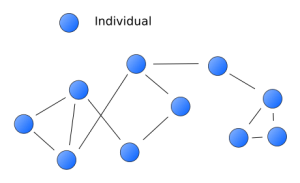
| Investigators |
| Olga Kornienko, PhD Katherine H. Clemans, PhD Dorothée Out, PhD Douglas A. Granger, PhD |
| Project Description |
| This study employed a social network analysis approach to examine the associations between friendship network position and cortisol levels. The sample consisted of 74 first-year students from a highly competitive, accelerated Nursing program. Participants completed questionnaires online, completed a series of sociometric nominations, and donated a saliva sample, which was later assayed for cortisol. Metrics derived from directed friendship nominations indexed each student’s friendship network status regarding popularity, gregariousness, and degree of interconnectedness. Results revealed that individuals with lower gregariousness status had higher cortisol levels, and individuals with higher popularity status had higher cortisol levels. Implications for prevailing theories of the social determinants of individual differences in biological sensitivity and susceptibility to context are discussed. |
